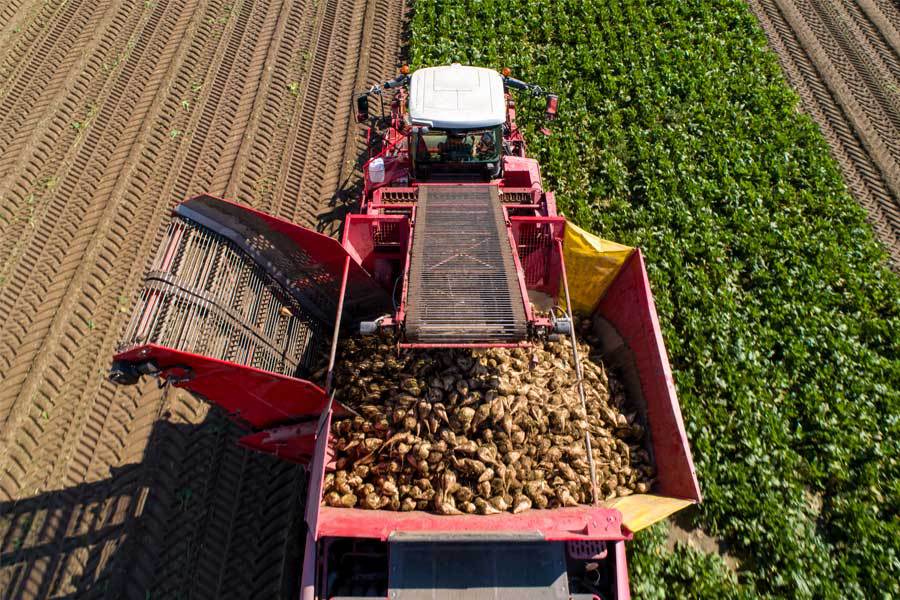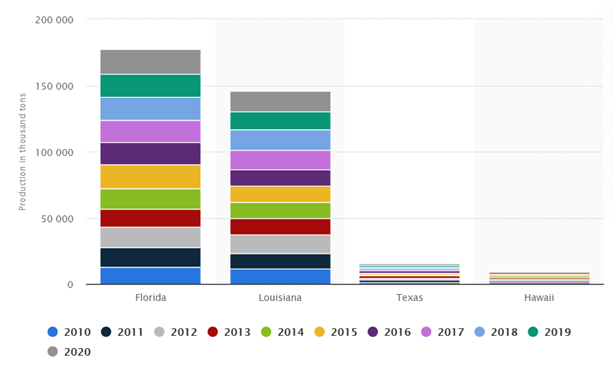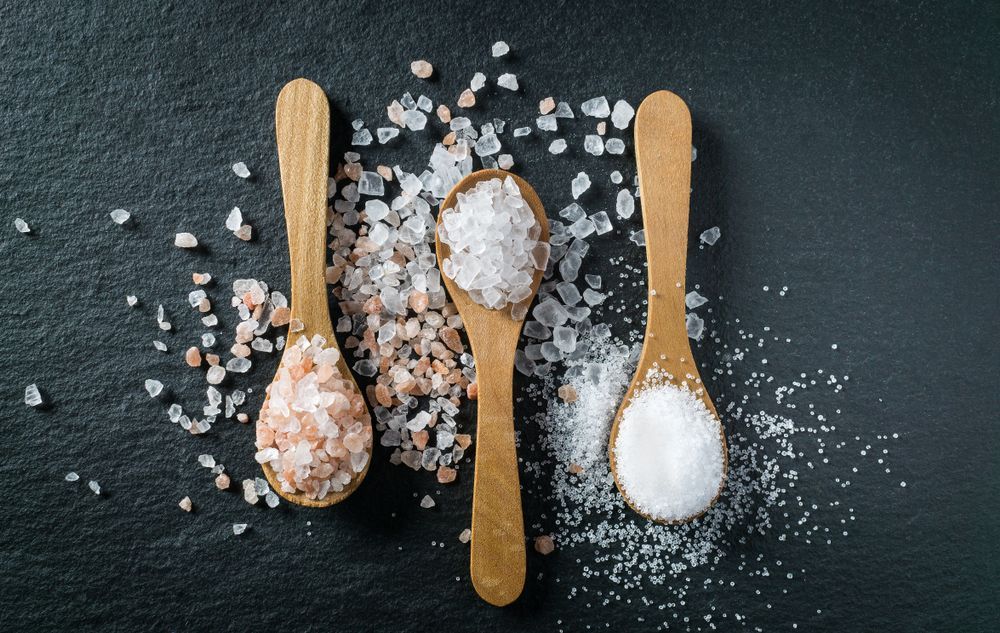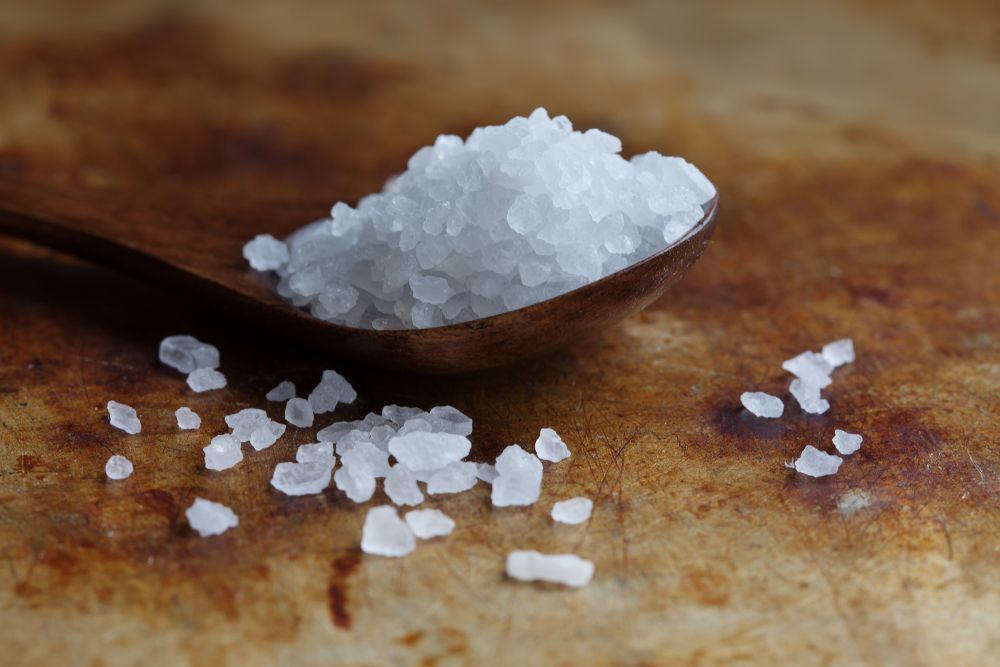Does the US Grow All the Sugar It Consumes?
Does the US Grow All the Sugar It Consumes?
Sugar, in all its various forms, seems to be incorporated in most products within the food and beverage industry. It is no surprise the U.S. benefits from this profitable resource by growing its own product, both sugar beets, and sugar cane. You may be asking, how much sugar do we grow in the U.S. in relation to how much we consume?
We will dive into this topic by first looking at what states are the top producers, how this compares to the rest of the worldwide production, and what it means for the industry.


Sugar Cane Production in the U.S. from 2010 to 2020
Between 2019 and 2020, the United States produced approximately 7.28 million metric tons of sugar. Compared to Brazil, the worldwide leader in sugarcane production, who produced 752.9 million metric tons of sugar cane, making up more than 34% of the global output.
It is important to note, most studies focus on sugar cane over beet sugar since 75% of the world’s sugar comes from sugar cane, and it typically is the preferred crop. This slightly skews the data by not including beet sugar in many statistics.
Sugar Cane Production by State
Florida:
This state produces the highest amount of sugar—52% of the nation’s yearly total, and much of the state has the perfect climate to grow the native Asian
sugarcane grass. The planting season happens from late August through January and the sugar cane is harvested between late October and mid-April. About 70% of the commercial acreage is in Palm Beach County, and the rest is grown in Hendry, Glades, and Martin counties.
Louisiana:
Louisiana is the second-largest sugar producer in the U.S., but with the oldest history. From the arrival of the sugar cane in America in 1751 and the first plant at modern-day New Orleans’ Bourbon Street, Louisiana is the root of sugar cane production in the U.S. It is also home to the original Louisiana Sugar Experiment Station, where scientists research, develop, and test sugar cane components to establish best practices for the industry.
Hawaii:
As the 3rd leader in U.S. sugar production, Hawaii’s tropics fit this plant’s requirements to succeed. Sadly, this plant’s output here has been on the steady decline since the 1980s, and industry insiders predict an end to this crop in Hawaii is coming soon.
Texas:
Texas produces 1.5 million tons of sugarcane, a close fourth to Hawaii, harvested annually on 40,000 acres. This business provides a lot of jobs and profit to the area, exceeding $200 million annually.
Worldwide Production of Sugar
Sugar is a vital export for many countries. It is a demanding crop, so only countries with warmer temperatures and more rain can produce successful sugar crops. Currently, 124 countries are responsible for global sugar production, Brazil outproducing everyone substantially. In 2019, Brazil produced just shy of 753 million tons while the U.S. only produced about 29 million tons. It is predicted that Brazil will also increase production in the next couple of years by up to 40%.
Sugarcane isn’t just harvested for consumption but also ethanol production. The US is the world leader in ethanol production, followed by Brazil, creating 84% of the world’s ethanol biofuel supply, a renewable energy source.

How Much Sugar Does the US Consume Each Year?
The average American consumes about 152 lbs of sugar each year, which is quite an increase from the 1970’s statistic of 123 lbs per year. It is advised to consume 10% of our calories from sugar, yet the current average is about three times over the suggested daily amount. The typical American consumes more than twice the average sugar intake of the 54 countries studied.
America must import about 3 million metric tons of sugar yearly to meet the demand for consumption. In 2019/2020, there was an all-time high amount imported at 3.38 million metric tons of sugar.
The increase of sugar in our foods over the past decades is due to various reasons, such as preservation, caloric bulk, and flavor formation. Over time, these reasons for including sugar in products have become essential components in the processes developed to streamline and provide the most food for our growing population.
How Much Sugar Does the Rest of the World Consume Each Year?
The world has increased about 2.01% every year in its sugar consumption, from 123.454million tons to 172.441 million tons. The most significant consumer markets include the U.S., Germany, the Netherlands, and Ireland. While number one in sugar consumption, the U.S. is not in the top 10 nations in terms of fat consumption.
The global and domestic sugar consumption habits are worth further investigation to see the real health impact. Since the U.S. is not in the top ten for fat consumption but overwhelmingly beats other countries in daily average sugar consumption, it is uncertain the true depths of health risks that come with different types of sugar and its relationship with fat content. Germany ranks second in sugar consumption yet has a low percentage of obesity. It is unclear what this means health-wise for America compared to the rest of the world, but these stats show the U.S. incorporates sugar in more products than any other country.
Indiana Sugars Providing Domestic Sugar for All
Are you in need of bulk sugar for your business? We provide high-quality, bulk ingredients at affordable prices to ensure your products are top-quality.
Indiana Sugars online allows us to provide you with a 24/7 marketplace for your convenience.
Contact our team with any questions you may have and let us know how we can help you.










